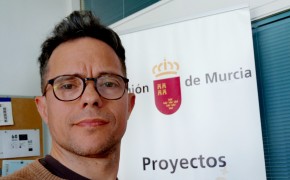The main task of the Entity will be that the old disused railway
lines come to life, in a environmental mood and with a regional socioeconomic revulsive.
At the time of launching a Greenways Network, we encountered
the problem that these routes ran through different municipal
terms and affected several Local Entities, which caused a greater
complication, since we had to agree on the different Local Entities
and the Regional Administration.
The Consortium of the Greenways of the
Region of Murcia was created in 2003, of an administrative nature
and with full legal personality,
The main task of the Entity will be that the old disused railway
lines come to life, not only as generators of environmental,
natural, cultural, tourist or religious activities, but also as an
engine and regional socioeconomic revulsive. In this sense, both
initiatives for the preservation and enhancement of the
Greenways are undertaken, as well as actions that allow
enhancing its aspect of territorial dynamism and cohesion. This
association between conservation and socioeconomic
dynamisation allows the creation of new work and business
opportunities.
The Consortium is committed to the creation of a work
methodology whose main value is the coordination between
entities for the optimization of resources, the preservation and
enhancement of heritage and social cohesion; thus creating a
space of convergence in which to take advantage of and
maximize the potential for ecological and social innovation
offered by the Greenways of the Region of Murcia, for the socioeconomic dynamization of their towns.
Resources needed
Human resources: Management, Secretary, Financial
Controller, Treasurer, staff.
Economic Resources: Each Consortium Entity contributes the amount of € 4,000 per year for current and management ; € 150,000 per year for surveillance and maintenance of the Greenways of the Region of Murcia.
Evidence of success
It is considered a good practice, given its autonomous and
organizational nature, since it plays a fundamental role when
coordinating all the consortium entities.
The main success is the enhancement of the different Green
Ways and the adhesion of more Town Councils, since in 2003 it
started with 4 Consortium Town Councils and a single Green
Route and currently there are 17 Consortium Town Councils and
4 Green Pathways in active.
Difficulties encountered
The coordination between the consortium entities and the Regional Administration.
The signing of agreements with ADIF for the transfer of land, in order to build the Greenways.
The signing of land transfers by owners for the construction of the Greenways.
Budget for monitoring and maintenance.
Potential for learning or transfer
We consider as a good practice the creation of the Consortium,
given that in most of the Regions, the difficulties when
coordinating the different Public Administrations or Entities, are
the same or similar.
In addition, and taking into account that the primary objective of
the Consortium, is to use the Greenways as a dynamic resource
for the territory and the population of the localities through which
they run, since it opens the way to new work and business
opportunities, associated with maintenance of these
infrastructure, the provision of qualified services or the marketing
of quality products and closeness to the user thereof, this
objective is transferable to any other country or region.
People who use the Greenways, wherever they may be, must see
and feel how each and every one of their demands and needs are
covered along the way, inviting their use on a daily and continuous
basis, while facilitating your loyalty as consumers of this resource.
Please login to see the expert opinion of this good practice.
Tags: Environment, Public sector, Administration, Green, Landscape








